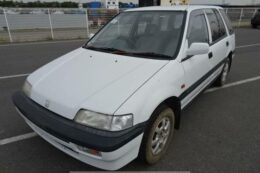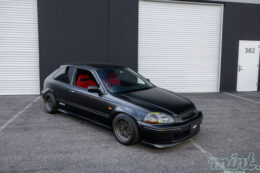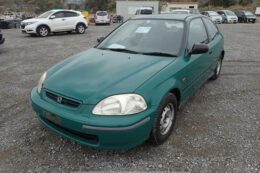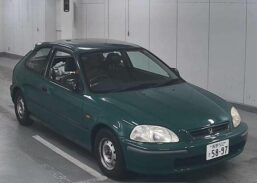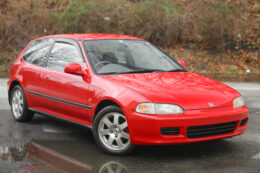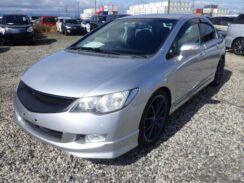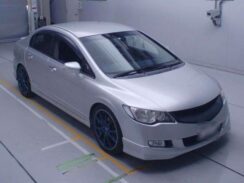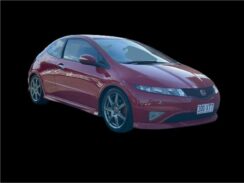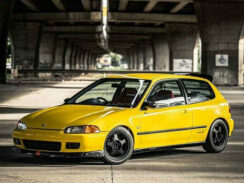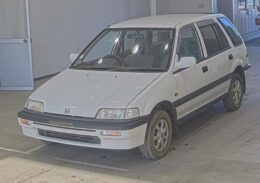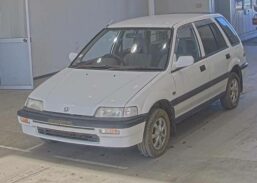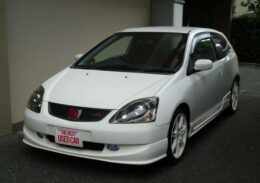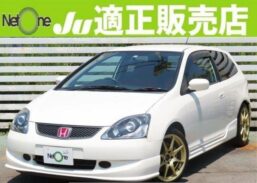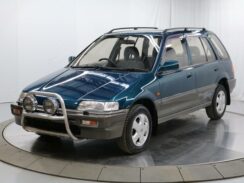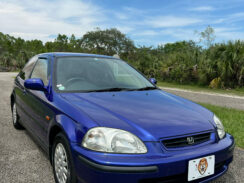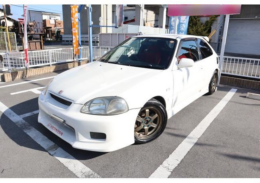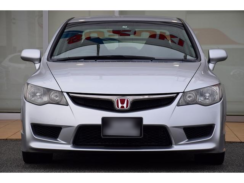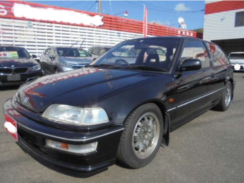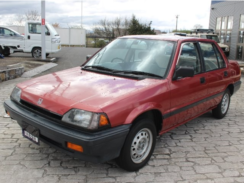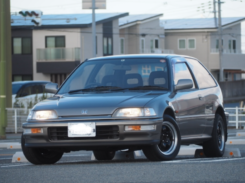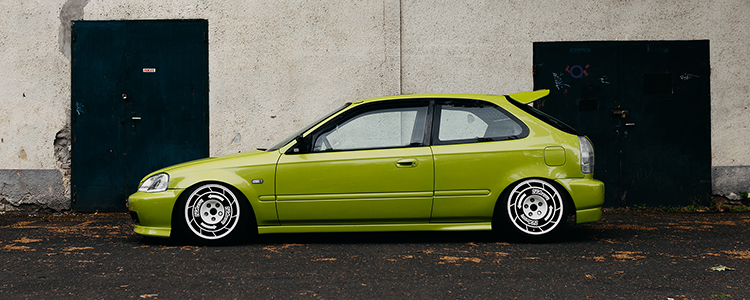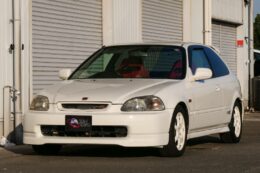
Honda Civic Type R (N.8494)
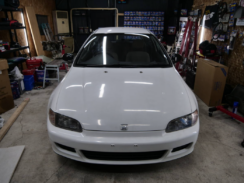
1992 Honda Civic EG Hatch
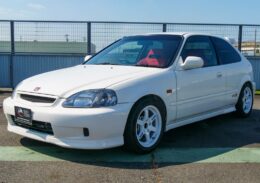
Civic Type R EK9 (N.8484)
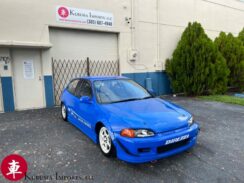
1993 HONDA CIVIC SIR EG RACE CAR
Honda Civic Buying Guide
Honda Civics are some of the most affordable JDM cars you can buy on a budget. Most will say if you see a Honda Civic on drag slicks, a mounted GoPro, and a laptop on the passenger seat, you should probably swallow your pride and don’t race it. This is because you’re probably setting yourself up for embarrassment.
Civics make the perfect beginner tuner cars, especially if you are a JDM car enthusiast or getting it for your son’s or daughter’s 16th birthday. Even when stock and in good condition. A Honda Civic is front-wheel-drive, and the engine doesn’t have a turbocharger. These are the main reasons why some might not be inclined to buy one regardless of the low prices that most are listed for.

The VTEC isn’t that great, but the K20 engine can handle more power than low spec RB engines like the RB20DE, which are more expensive. You can get a Honda Civic for cheaper than an RB20 engine. Which makes more sense, buying a car with a highly tunable engine or buying a motor and sitting it in your garage as you look for a vehicle and other supporting mechs?
Production of the Honda Civic began in 1972, and it’s one of the longest-running JDM cars as it’s still in production to date. The Civic gained popularity in its fourth generation (EC, ED/EE, EF, EX) when Honda introduced VTEC and electronic fuel injection. You’ll rarely see the first three generations on the road unless someone did an engine swap or decided to restore one. Rare models such as the Civic 1200 RS are common in classic JDM car meets.
Pros and Cons
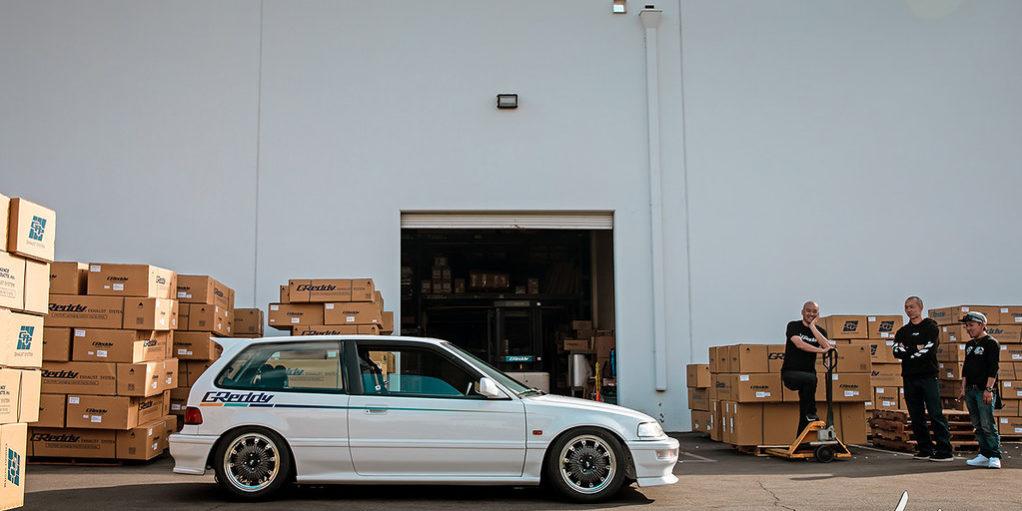
Pros
Affordable
A Honda Civic might be in the price range of high-end JDM sports cars and classics such as a Mazda RX-8 or an R34 Skyline, but there are affordable options. You can easily find one listed for just under $5,000 with some rust and mechanical issues but a running engine and a sound transmission.
Getting a Civic with a manual transmission listed for that price can be difficult. Still, you can buy one with an automatic transmission if you are a beginner or get it for a teenager’s birthday. Once they learn some car mechanics, maybe they will do a manual or sequential transmission swap.
Suppose you are looking for a project Honda Civic regardless of its condition. In that case, you can get one for under $2,000 in undrivable condition, and it’s up to you to make it drivable. You can do a complete OEM engine and transmission build and install aftermarket suspension and interior and drivetrain components. Sometimes this is a cheaper option than buying a 25,000-dollar Civic, depending on the scope of your build.
Fun to Drive
FWD cars aren’t that fun to drive, but Honda Civics are exceptions. Since production, all Civics have been made as FWD, with a few trims being AWD. The engine sits just on top of the front axle, ensuring balance on the front axle and reducing directional movement when cornering.
Nothing feels good on a Honda Civic than when the VTEC kicks in, and you feel that extra thrust. Most Honda enthusiasts will say that VTEC is better than turbochargers. Also, VTEC engines are more fuel-efficient than turbocharged engines.
Civics also handle well due to the short chassis and lower ride height, contributing to a lower center of gravity. When the center of gravity is low, body roll is reduced, and the car feels stable at high speeds and when cornering. The brakes aren’t that good, but they are good enough for a stock Civic. If you are thinking about increasing power output, you should start with upgrading the OEM braking system.
Highly Tunable Engines
A 4-cylinder Honda Civic will embarrass supercar and sports car owners leaving them thinking it probably has a 2JZ or RB swap. This is until they see a silver B16A glimmering in the night light. The B16 is found in the 1989-1991 Civic, and it’s available in both VTEC and non-VTEC versions.

Turbocharging a B16 engine is one of the easiest methods to increase power output alongside other supporting modifications such as aftermarket fuel injectors. However, some tuners will recommend the non-VTEC version if you want to turbocharge your Civic since it has a lower compression. B18 and B20 engines are also tunable, just like the B16, and these engines are also rev-happy. A rev-happy engine will allow you to get more power out of it than an engine with a lower maximum rev limit.
The K series engines replaced the B series engine. The significant difference between the two is that the K series engine has thicker cylinder sleeves and thus has a stronger block. You can easily obtain more power from a K series engine, but you’ll put down more power to the wheels if you have a B series engine. A K series engine is also cheaper to build than a B series engine as it has more aftermarket support.
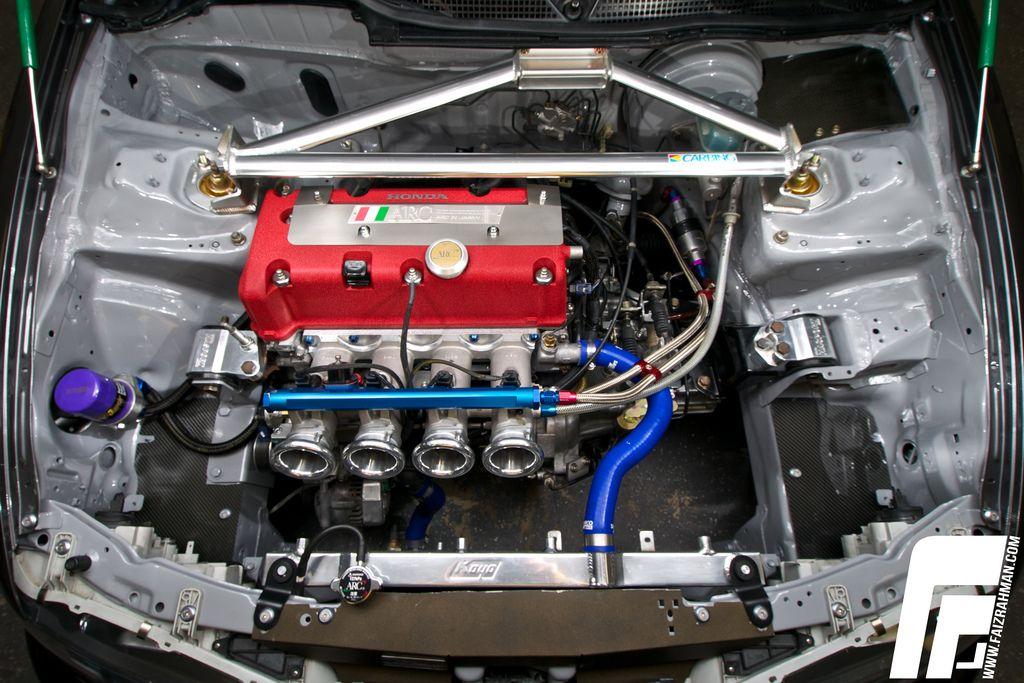
All the engines listed above and sub-specs of each can handle around 400 horsepower with stock internals, but you’ll have to spend more if you want more. There are 1000-horsepower K20s and B16s fitted in sleeper Civics. So how much will you have to dent your pockets to milk out 1000 horsepower on a Civic?
In the first place, you have to know that a 1000-horsepower FWD drive is practically impossible to drive. You’ll have to convert it t RWD or AWD. But that is not all you’ll have to get better and stronger axles, brake setup, wheels and tires, chassis braces, and other supporting mods. In total, the price will range from about $100,000 or more.
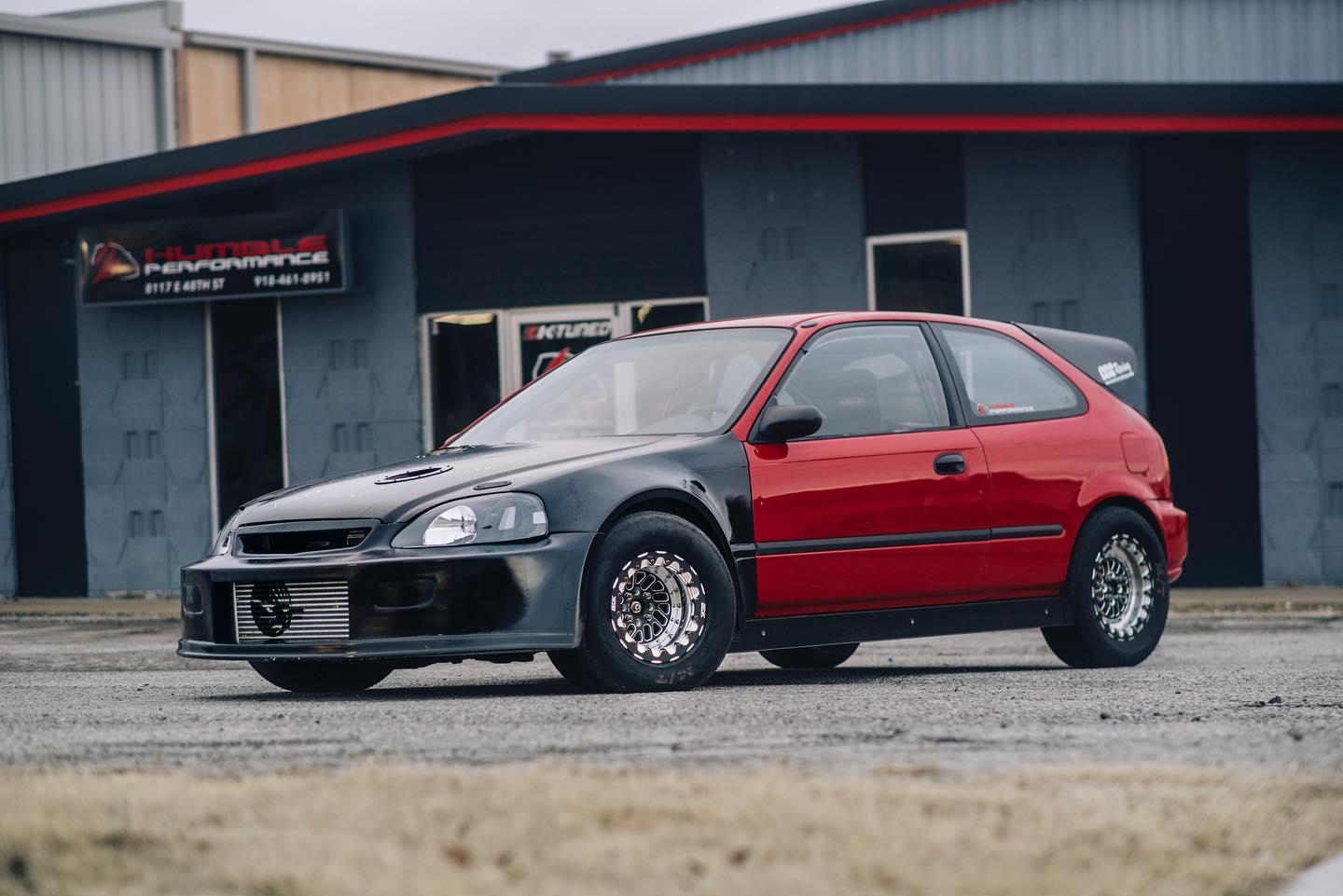
Figure 1 1000-horsepower Civic by humbleperformance
Other engines, such as the D series engine, are also suitable for a daily driver or a mild track car. You’ll quickly get an easy 300 horsepower if you rebuild the engine, add a turbocharger kit, a new fuel pump, and fuel injectors.
Wide Aftermarket Support
You’ll find Honda Civics in almost every motorsport there is. There’s nothing you can’t do with a Civic, from drift tracks and drag strips to a fully blown AWD Civic track car. Some will also turn it into a daily driver sleeper car, and no one will expect to be gapped by a 20-year-old JDM hatch on the highway while commuting back home from work.

This is mainly because of the availability of aftermarket component manufacturers who make performance parts and body and chassis parts. The price depends on the quality and which manufacturer you are getting from. OEM parts are also available since some owners swap out the OEM parts and replace them with better aftermarket parts.
However, the price can be a bit higher, but if you are restoring a Civic to OEM spec or using it as a daily driver, OEM parts are the best option.
Extremely Reliable and Easy to Maintain
Civics are incredibly reliable when in stock or under a light tune. You’ll easily get 40mpg on a stock engine. If you decide to add a tune and other engine mods, reliability will reduce maybe by 5 to 10 mpg. However, it will still be more reliable than most modern-day sports cars. The 1998 Honda Civic is the most reliable Honda Civic boasting high-reliability ratings from owners.
But reliability does not only revolve around fuel consumption. Honda Civic parts are cheap and easy to get due to aftermarket manufacturers’ influx. The Civic’s simple build makes it easy to work on. Both mechanical and non-mechanical parts can be replaced with experience from watching YouTube videos and some handyman skills. If you ask most Civic owners, they’ll tell you they work on their cars themselves.
OEM body panels do not last long, especially if the car has been in constant use or in a poor storage facility. Still, all it takes is some rust removal, painting, or buffing out dents to rejuvenate them. For mechanical parts, it’s recommended that you get new ones as dents or rust can really mess up the axles or the control arms on a Civic.
Excellent Ride Comfort
The Honda Civic wasn’t built to be as sporty as the Toyota AE86 or the Nissan Pulstar GTI-R. When designing the Civic, fuel efficiency, ride comfort, and practicality were Honda’s primary goals. If a Civic still has the OEM suspension and has been well maintained and rebuilt, you’ll find that it has a better ride comfort when compared to other cars in its class.
Great Minimalistic Looks
Honda Civics are definitely the best-looking JDM cars. Still, you’ll rarely see one with a body kit or other exaggerated cosmetic modifications.

Most owners will leave their Civics stock with maybe an added wing, wheels, and a good paint job. Type R spec wheels and body panels are also available either OEM or aftermarket. These are the most sought-after cosmetic modifications for Honda Civics, especially those made before 2000. Lowering the suspension or installing bags or coil-overs is one of the first common mods on a Honda Civic.
Cons
Poor Interior Quality
Interior components on Honda Civics literally fall off you, especially when driving on a bumpy road or at high speeds. The roof liner, sun visors, and dashboard might need some work. Sometimes the seats might come off when you brake hard at high speeds or hit a bump unknowingly.
This is one of the reasons you’ll find a Honda Civic with a redone interior or a stripped interior, leaving only the dash and the front seats. If you find one with the OEM interior, there’s a chance it has been recently redone, or the car has been well maintained through the few hands it has been through.
The sunroof lining on a Honda Civic also leaks, especially when driving in a heavy downpour. Water might not directly leak into your car, but you’ll notice water patches on the roof liner as water is held there. This weakens the roof liner, and water will start leaking into your car before you see it.
Slow When Stock
A Honda Civic is not that fast when stock, even with the K20 engine, which made around 150 to220 horsepower when new. The K20 was used in the eighth-gen Civic (FA, FD, FG), which did a 0-60 time of around 7 seconds, and if you are buying a used one, you should expect less than that.
Older Civics with the B series and K series engines are slow when in stock form. When new, most did 0-60 in around 12 seconds, and if you try that with one today, you’ll be lucky if you get to 60mph.
Inefficient braking system
Most Honda Civics were made with front disc brakes and rear drum brakes. The main issue is that the rear drum brakes wear out quicker if the car is used regularly. When the rear disc brakes wear out, braking is entirely dependent on the front disc brakes, which will cause them to wear out quicker, or they might even warp.
If the brake fluid lines are in good condition, you can replace only the calipers and rotors on the front when and replace the drum brakes on the rear wheels if you are on a budget. Drum brakes last longer, but disc brakes have better stopping power. Upgrading to better disc brakes is perfect if you plan to increase the engine’s power output.
Common Issues with Honda Civic
Electronic Component Failure
This is common in older JDM cars, but different cars have different failing electronics. The taillights, headlights, and the AC are the most common failing electrical components on the Honda Civic. Such electrical components fail to turn off when you switch off your car, thus draining the battery charge.
Electrical component failure in Honda Civic has been an issue as owners of the 1983 to 2007 models have reported similar problems. Other minor electrical failures include power window switch, windshield wiper motor failure, instrument cluster light failure, and stereo system failure.
Coolant System Leak
If you notice that your engine is overheating and you recently put oil in it, there’s a high chance of a leak in the coolant system. Coolant leaks are mainly caused by worn-out parts in the cooling system, including the thermostat, radiator hose, and the radiator itself.
The radiator is built of plastic, and metal parts crack over time, and the coolant will leak through the cracks if not repaired. You should replace the radiator with a new one since you will fix one or two cracks and others will form on other radiator parts. If you sum up the possible repair costs, you’d better get a new one.
Due to old age, the radiator hose is damaged by leaking engine oil or normal wear and tear. If there’s no oil leaking from the radiator, check the radiator hose and replace it if you spot any leaks. Excess coolant pressure caused by a failing thermostat will also damage the radiator hose.
The thermostat controls the coolant valve. Coolant pressure will build up if the valve fails to open due to high engine temperatures.
Rust
Rust is inevitable on all cars and happens in several places, but in Honda Civics, it occurs in one place you wouldn’t want to see it, the rear axle. This has been an issue since Honda rolled out the production of the Civic. By the look of things, it is not going away soon as new 2021 Honda Civic owners complain about the same.
When buying a Honda Civic, this is one of the areas you should look out for. Suppose the rear axle only has surface rust. It can be easily removed but ensure you check the inner parts using a flashlight or have the car lifted if possible. You can use the rust to negotiate the price, then after that, you can either remove the rust and rust-proof the rear axle or replace it with a newer one.
Poor Engine Mounts
This is common on Honda Civics made between 2002-2007. Excess vibration is felt from the engine bay, especially when driving at high speeds, idling, or reversing. Suppose you have been driving for a while. You’ll also notice an imbalance while steering as the engine leans towards the opposite direction to which you are turning.
The rubber used on Honda Civic engine mounts is not of good quality. Thus the mounts will wear out quicker as the car ages. Suppose you are looking to replace the engine mounts. In that case, you should consider replacing them with better ones.
Occupant Position Sensor Failure
The occupant position sensor detects an occupant’s height, weight, and head position. It determines whether the occupant’s head is near the side airbag’s deployment area. In Honda Civics, this component sometimes functions irregularly.
This has been an issue for Honda Civics since 1996, and Honda has recalled some of its models to get replacement position sensors. If the sensor is faulty, the airbag warning light will illuminate, indicating that you need to replace it.
Average Prices
You can get a Honda Civic listed for anything between $5,000 to over $30,000. It all depends on what you are looking for in your dream car. If you want a fixer-upper one in good driving condition, budget $5,000. But if you want something you can build from the ground up with custom parts, you can buy a grounded one just for the shell for under $3,500. You can also search salvage yards for shells for around $1,000 or less.
Comparable Alternatives
- Toyota AE86
- Nissan Pulstar GTI-R (Buying Guide)
- Subaru Vivio
- Nissan March
- Honda S2000 (Buying Guide)
- Mitsubishi Colt
- Honda Beat (Buying Guide)
- Toyota Starlet
Models and Specifications
1972-1979 Honda Civic (SB1, SG, SH, SE, VB)
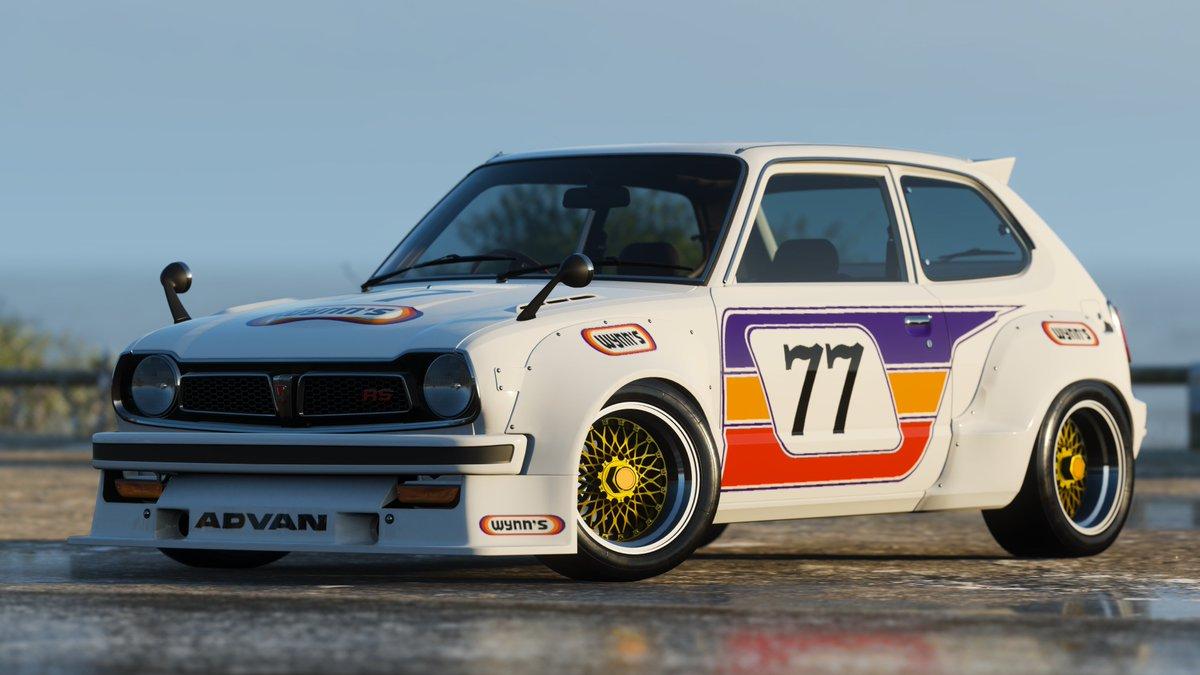
Honda made the first-gen Civic when the world was undergoing the 1973 oil crisis and 1975 EPA emissions standards. Foreign manufacturers in the US had trouble making sales, but Honda found a way to do it. It was first sold in Japan and Britain, then in the US, rivalling other JDM manufacturers such as Toyota and Nissan.
The first-gen Civic comes with a 1.2-litre, 1.3-litre, or a 1.5-litre mated to either a 2-speed automatic transmission or a 4/5-speed manual transmission which most cars did not have. Honda’s main focus was making a fuel-efficient car, so power output was never really a concern. The first-gen Honda Civic made around 50 to 60 horsepower depending on the engine option when new.
Due to the Civic’s fuel efficiency and reliability ratings had more sales than other cars in its class, such as the Ford Pinto and Chevrolet Verga. There was also no competition between manufacturers in the Civic category. Most manufacturers turned to producing commercial vehicles due to the oil crisis.
In Japan and other markets except for the US market, the first-gen Civic was sold as a sedan, 2-door hatchback, or a 4-door sedan briefly made and discontinued in 1978. The 2-door hatchback was the primary model sold in the USA.
Honda also tried making a sportier variant of the Civic in 1974 called the Civic RS, but only 20,000 units were produced. It has a 1.2-litre twin-carb engine which made around 100 horsepower, 50 more than the standard model.
1979-1983 Honda Civic (AL, SS, SR, ST, VC, WD)
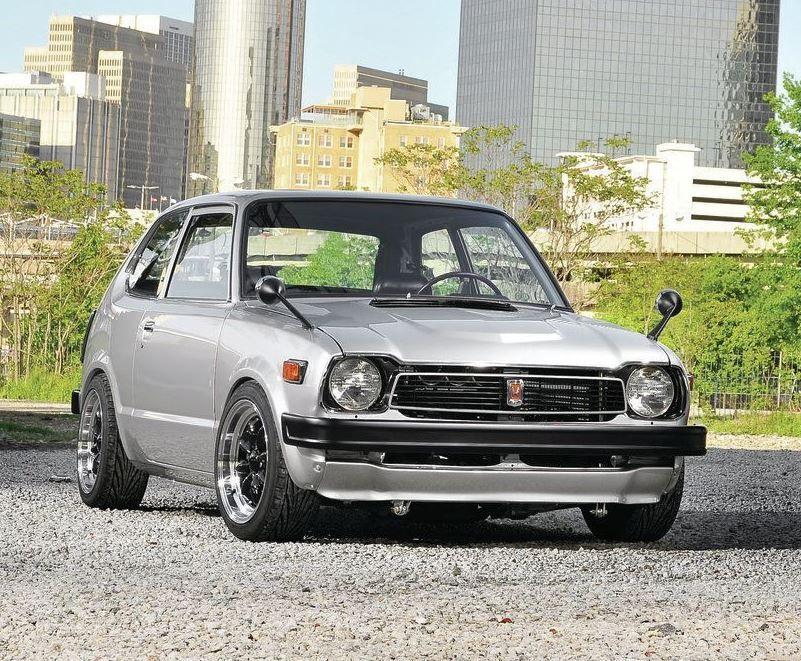
Due to increasing demand for a larger Civic, the sedan model was discontinued in 1974. Honda then introduced a 5-door wagon and increased the wheelbase of the 2-door hatch. This increased legroom for the rear passengers and trunk space, meaning the hatchback model could now be used as a daily driver without worrying much about cabin and trunk space.
Power output was also increased, and only two engine options were offered a 1.3-litre EN1 engine with an EJ CVCC (Compound Vortex Controlled combustion) variant and a 1.5-litre engine with CVCC. Engines with CVCC technology have the inlets and the exhaust valves acting as fuel-air valves working in pairs. They also have an auxiliary inlet that increases the fuel-air mixture volume.
The 1.3-litre engines made around 55 horsepower, and the 1.5-litre made around 70 horsepower at production. Due to the wagon’s weight, it was only sold with a 1.5-litre engine.
In 1979 Honda introduced a sportier CX variant that was only sold as a 2-door hatch like the first-gen Civic RS. It has a 1.5-litre CVCC engine, a 5-speed manual, firmer suspension, and a rear stabilizer bar. Buyers could also opt for the luxury package for the Civic CX, which is upgraded to the Civic CX-S. The Civic CX-S was only sold in black. It features a blacked-out grille, sunroof, wheel caps, and body-coloured bumpers.
The CX and CX-S models were only sold in Japan. Still, there was an American version with the same features called the Civic S. Still, no luxury options were available.
1984-1988 Honda Civic (AG, AH, AJ, AK, AT, AU)

Honda reintroduced the sedan model in the third-gen Civic and increased the wheelbase for each model, including the 4-door wagon. A new fastback coupe was also introduced to the Civic lineup called the Civic CR-X, which has a sportier look than the base model. The CR-X was sold without the rear seat for the US market, which was replaced by a lockable storage compartment. This was optional in other markets where buyers did not want the back seat and thus had to pay for the storage compartment to replace it.

Fuel efficiency was still one of Honda’s main priorities. They squeezed more power from their engines in the third generation, pushing out between 90-120 horsepower.
You get the third-gen Civic with a 1.2-litre, 1.4-litre, 1.5-liter, or 1.6-litre engine driving the front wheels via a 4/5-speed manual or a 3/4-speed automatic transmission. Civic wagons were only sold with a 5-speed manual with an extra 4WD gear (5+1 manual AWD).
In 1984 a Civic Si hatchback model was released for the Japanese model only with a new 1.5-litre DOHC engine which made around 120 horsepower at the time of production. Later in 1985, few Si Civic sedans were made. No specific figures are available, but very few were still produced with the 1.5-litre DOHC engine.
Sportier versions of the third-gen Civic were sold for other markets with an “S” badge but with the standard 1.5-liter carbureted engine. Only the Civic CR-X Si had a different 1.5-litre SOHC engine which made around 90 horsepower. In comparison, the 1.5-litre carb engines made 85 horsepower at production.
1988-1991 Honda Civic (EC, ED, EE, EF, EX)
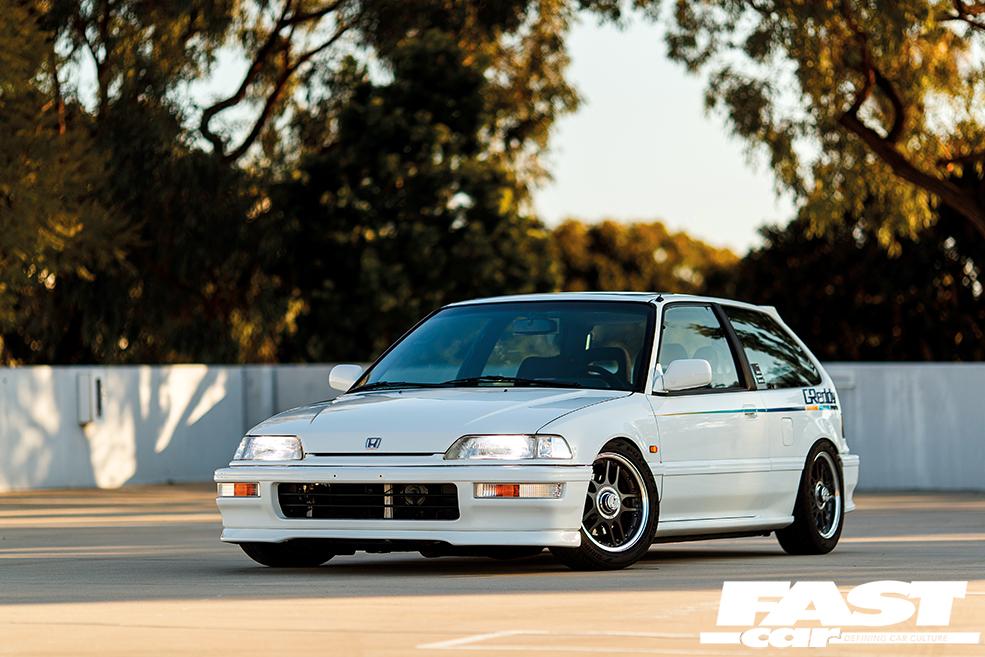
The fourth-gen Civic was made to be sportier and more powerful than its predecessors featuring new engine options and a new suspension setup. It was streamlined as much as possible, featuring slanting headlights that aligned with the bumper, a lower hood line, and the front windshield receding at a greater angle.
Honda used a double-wishbone setup at the front and an independent suspension in the rear. A front double-wishbone suspension setup enables both front wheels to stay on the ground, which is important for a front-wheel-drive car.
You get the fourth-gen Civic with a 1.3-litre, 1.4-liter, 1.5-liter, and a 1.6-litre engine. All engines belong to Honda’s D-series engines and one 1.6-liter VTEC B-series engine. These engines were a favourite among tuners at production, and Honda Civics started becoming a common sight in motorsport events across Japan.
Civic 23L/23LU
This is the base model Civic with a 1.3-Liter single-carb SOHC D13 engine. In some markets, it was badged as the 23L, and in others, 23U.
Civic 25X, 25XT
A more powerful 1.5-litre D15 engine is available in these trims. In the 25X, you get a 1.5-litre single carb engine, while in the 25XT, you get a 1.5-litre dual carb engine with a double-point fuel injection system. Engines with double point fuel injection have two fuel injectors per cylinder, one high and one low, controlled by a throttle and RPM sensing ECU.
Civic Si-R
When Honda introduced VTEC technology in 1989, it was first used in the Honda Integra with the 1.6-liter B16A engine, which made 120 horsepower at the time of production. Later in the year, the B16A engine was installed in the Civic, and it was badged as the Civic Si-R. The ECU had to be changed, enabling it to control the new camshaft, which had two cam profiles. One for fuel economy at low RPMs and one which increases valve lift to let in more air at high RPMs.
The Civic Si-R was only sold as an FWD hatch, mainly in Japan. At the same time, a less powerful version of the B16A engine was used in the Civic 1.6-VT in the Australian market. Both cars were only sold with a 6-speed manual transmission. Unlike base models, buyers had a 4/5-speed manual or 4-speed automatic transmission options.
The Civic wagon was the only model with optional 4WD. You get it with the D16A6 engine mated to a 6-speed manual transmission.
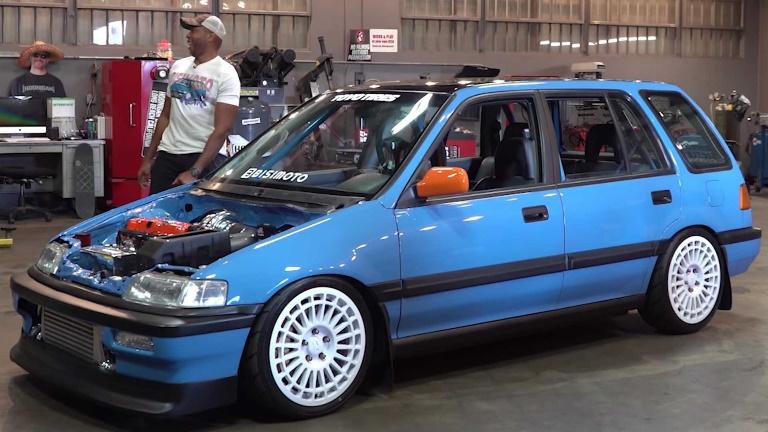
Civic ED (GL)
This is the base model sold in the North-American market with a 1.5-litre D15 engine driving the front wheels via a 4/5-speed manual or a 4-speed automatic transmission.
Civic CX/S-TD
The Civic CX, also known as the Civic S-TD, had a similar engine and transmission options to the Civic ED but was only sold as a hatchback in Canada.
Civic DX
Sold as either a sedan or hatchback, the Civic DX had a more powerful variant of the 1.5-liter D15 engine called the D15B2 with SOHC. It made around 90 horsepower at the time of production, 20 more than the non-SOHC variant.
Civic EX
The Civic EX sedan was introduced towards the end of production of the fourth-gen Civic in 1990 with a 1.6-litre SOHC D16 engine. At the time of production, it favoured buyers who wanted Civic Si-R performance but in a Sedan which they could take their family or friends on a ride with.
Civic LX
This model was also sold only as a sedan with a more luxurious and bolder-looking interior than other models: cruise control, tachometer instrumentation, electric windows, door locks, and rearview mirrors. The exterior was also not left out as the Civic LX had wheel covers and body-coloured bumpers instead of black plastic bumpers in standard models.
You get the Civic LX with similar engine and transmission options as the Civic DX.
Civic Si
Like previous-gen Si models, the 1989 Civic Si was only sold as a hatchback. Still, the fourth-gen Civic Si comes with a 1.6-litre SOHC engine (D16A6), which made around 110 horsepower at production.
1991-1995 Honda Civic (EG, EH, EJ)
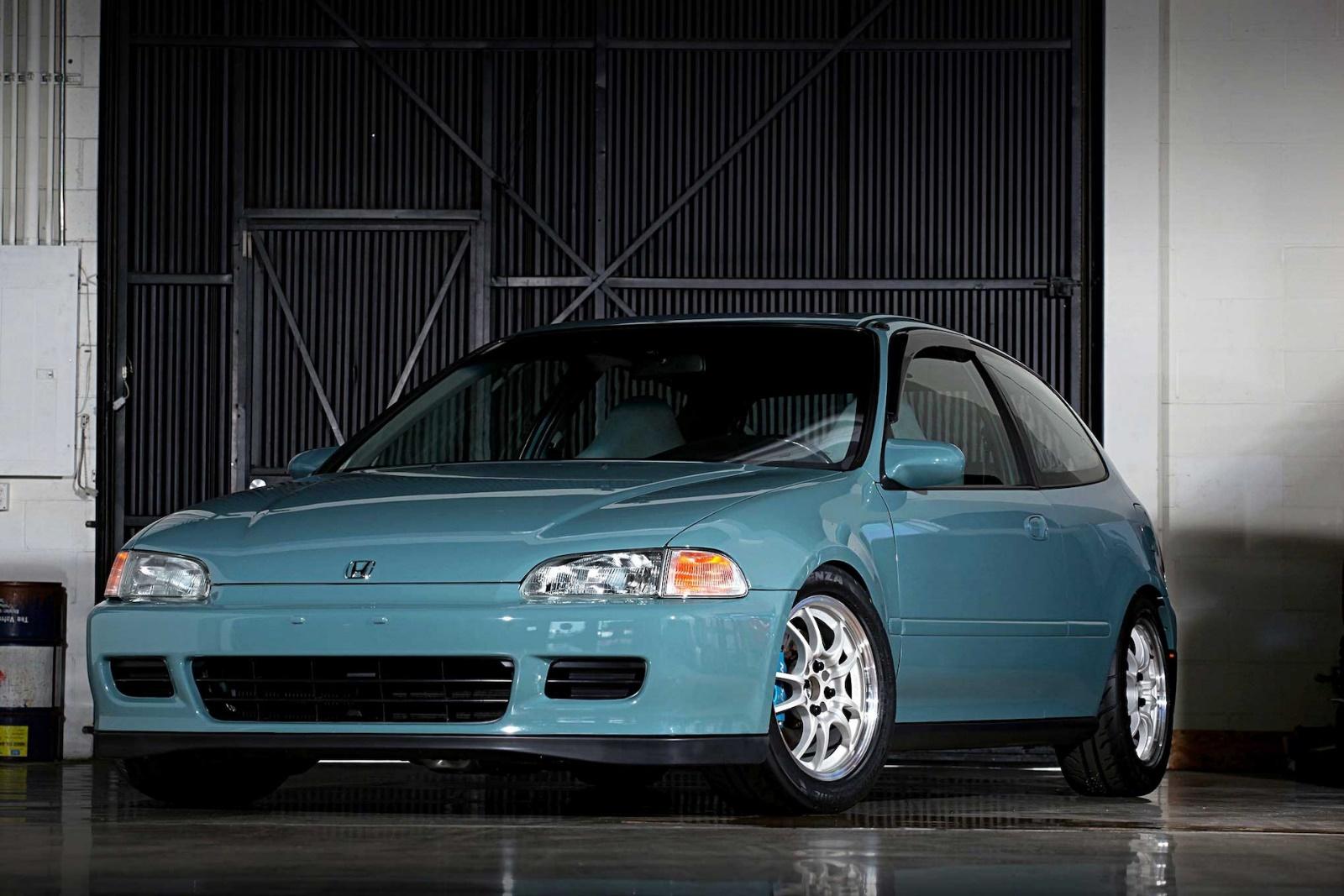
Built when fuel prices were high, the fifth-gen Civic had to be as fuel-efficient as possible. Honda managed to do this without affecting performance, thus maintaining good sales in the US, Japan, Australia, and other markets worldwide.
Despite being larger, the fourth generation Civic is lighter than some of its predecessors, with hatchback models weighing less than 2200 pounds. This was achieved by using lightweight material where applicable. For example, the steel wheels were replaced by aluminum alloy wheels and reduced trim and moulding.
The Civic wagon was discontinued as sedans were enough due to the increased wheelbase, which suited customer needs for wagon prospect customers. However, production of the fourth-gen wagon continued until 1996 for other markets except for the US market. The hatchback’s wheelbase was also increased for the fifth-gen Civic.
A 2-door coupe model, Civic E-Si, was also introduced for the fourth-gen Civic. It has a sportier appearance than the base model sedan, mainly due to the addition of the rear wing, and it resembles the Honda prelude.

You get the fourth-gen Civic with the D-series engines (1.3-litre, 1.5-liter, and 1.6-litre) and two B series (1.6-litre and 1.8-litre) engines driving the front wheels via a 4-speed or 5-speed automatic transmission.
Civic CX hatch
Honda made the CX hatch as reliable as possible, sacrificing handling and interior comfort. All-electric such as window and door controls were controlled manually. The interior had no mouldings, which reduced the overall weight. But such features were optional, and buyers could pay more to get them.
Power output for the 1.5-litre D15B8 was also cut down to 70 horsepower for non-Canadian. Other Civic CX models sold in other markets except the USA had the same engine, making around 100 horsepower at production.
Civic VX hatch
When the Civic VX hatch was revealed, it was the most fuel-efficient car in its class. Fuel efficiency was contributed not only by the low weight but also by introducing VTEC-E technology. This technology was utilized in the D15Z1 engine. It features cam followers at every cam profile and double-piston rings per cylinder. These seal the combustion chamber better, thus preventing air loss during combustion.
Civic DX hatch, sedan, coupe; EX sedan
The DX spec has the 1.5-litre D15B7 driving the front wheels via a 5-speed automatic or 5-speed manual transmission. Being the second most powerful Civic in the fourth generation, it was the to-go-to Civic for buyers who couldn’t get the Si-Spec Civic.
The Civic EX sedan was the most luxurious Civic in the fourth generation. It features power windows, doors and mirrors, ABS, all-around disc brakes, a front stabilizer bar, wheel covers, and body-coloured bumpers.
Civic EX Si coupe, Si hatch, LX Sedan
The fourth-gen Civic Si was only sold as a coupe or hatch, and only a few units were produced. Even though the Si coupe and hatch were not as fuel-efficient as other specs, they were still quick enough. All fourth-gen Civic Si models have a 1.6-litre VTEC engine (D16Z6) that made around 125 horsepower at production time. All Si models in the fourth generation come with a 5-speed manual transmission.
Since there was no Si-spec sedan, Honda used the 1.6-litre VTEC engine in the LX sedan, which has similar luxury features to the Civic EX sedan.
1996-2000 Honda Civic (EJ, EK, EM)
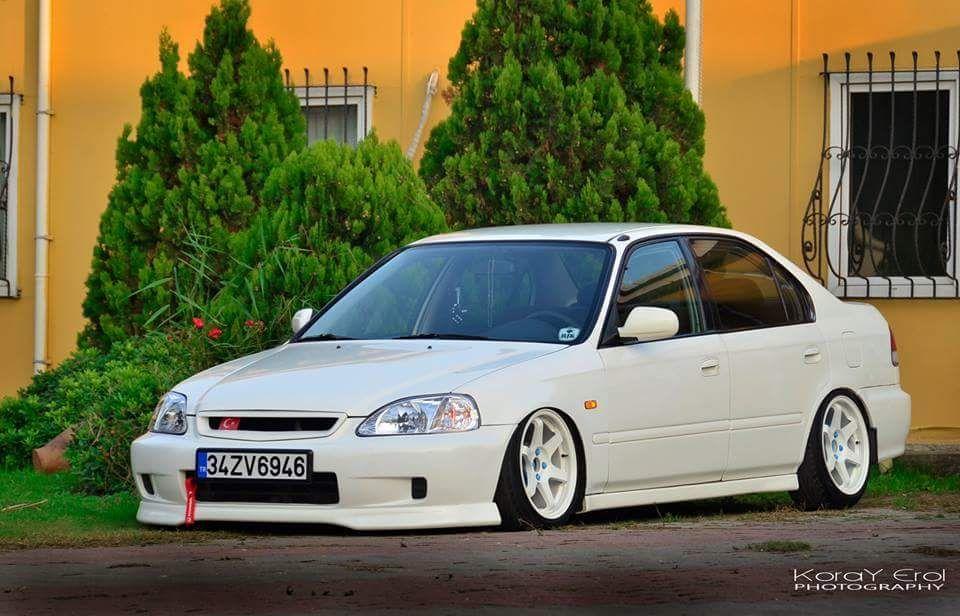
There’s not much difference between the sixth-gen and the fifth-gen civic except the addition of a new wagon-like model, a 5-door hatchback, absent from the Civic lineup since 1974. Like its predecessor, the sixth-gen Civic used the D-series and the B-series engine with a few reliability and performance tweaks driving the front wheels via a 5-speed manual or a 4-speed automatic transmission.
Civic CX
The base model Civic was sold as a hatchback only. You get it with a 1.3-litre, 1.4-litre, or 1.5-liter SOHC engine and a standard interior with low-quality fabric seats, no AC, and stereo. Unlike higher-spec models, the base spec Civic does not have power steering, but buyers could pay more to get tilt steering.
Civic DX
You get the Civic DX as either a hatchback, coupe, or sedan with similar engine and transmission options to the Civic DX but with an upgraded interior and exterior. Alloy wheels, power steering, quality fabric seats, and a stereo system are standard features you get on a DX-spec Civic that are not in a Civic CX.
Civic LX
The Civic was sold as a sedan with features from the DX-Spec with an added front stabilizer bar, power windows, door controls, power mirrors, a tachometer, and cruise control. It has the same 1.3-litre, 1.4-litre, or 1.5-litre engines which made around 80-100 horsepower at the time of production.
Civic EX
Equipped with a 1.6-litre VTEC engine, ABS, AC, power steering, and other features from the Civic LX, the Civic EX was a favorite among buyers who preferred ride comfort and performance in the 1990s. The 1.6-litre VTEC engine was not as powerful as the one in the Si-Spec Civic, but it still gave other JDM sports cars competition at the time of production. It was only sold as a hatchback or coupe model, with the coupe having a 2+2 seating configuration.
Civic HX
Fuel prices had not subsidized that much when Honda was making the fourth-gen Civic, so they had to make a fuel-efficient option to be badged as the Civic HX. It was made with a 1.6-litre VTEC-E engine mated to a 4-speed automatic transmission and was only sold as a coupe. However, buyers could upgrade to a 5-speed manual if they wanted to.
A fuel-efficient sedan badged as the Civic GX was also sold but was not available for the public to purchase. It was only sold in the US to corporates buying several units as a fleet. The Civic GX only runs on Compressed Natural Gas which was a solution to high fuel prices.
Civic Si, Si-R
In 1999, just before the end of production of the sixth-gen Civic, Honda released the Civic Si (badged Si-R in Canada) as a coupe-only model mainly sold in Japan and Canada. It has the 1.6-liter VTEC engine mated to a 5-speed manual transmission. The B16A2 made around 165 horsepower at production.
Type R
In 1999, Honda introduced the first Type-R badged Civic, the fastest and most powerful Civic ever produced till then. The Civic Type R was only sold as a hatchback mainly got the Japanese market, and it was built on the Si-R chassis. It comes with the B16B engine, which made around 185 horsepower at production.
2001-2005 Honda Civic (EU, ES, EP, EM)
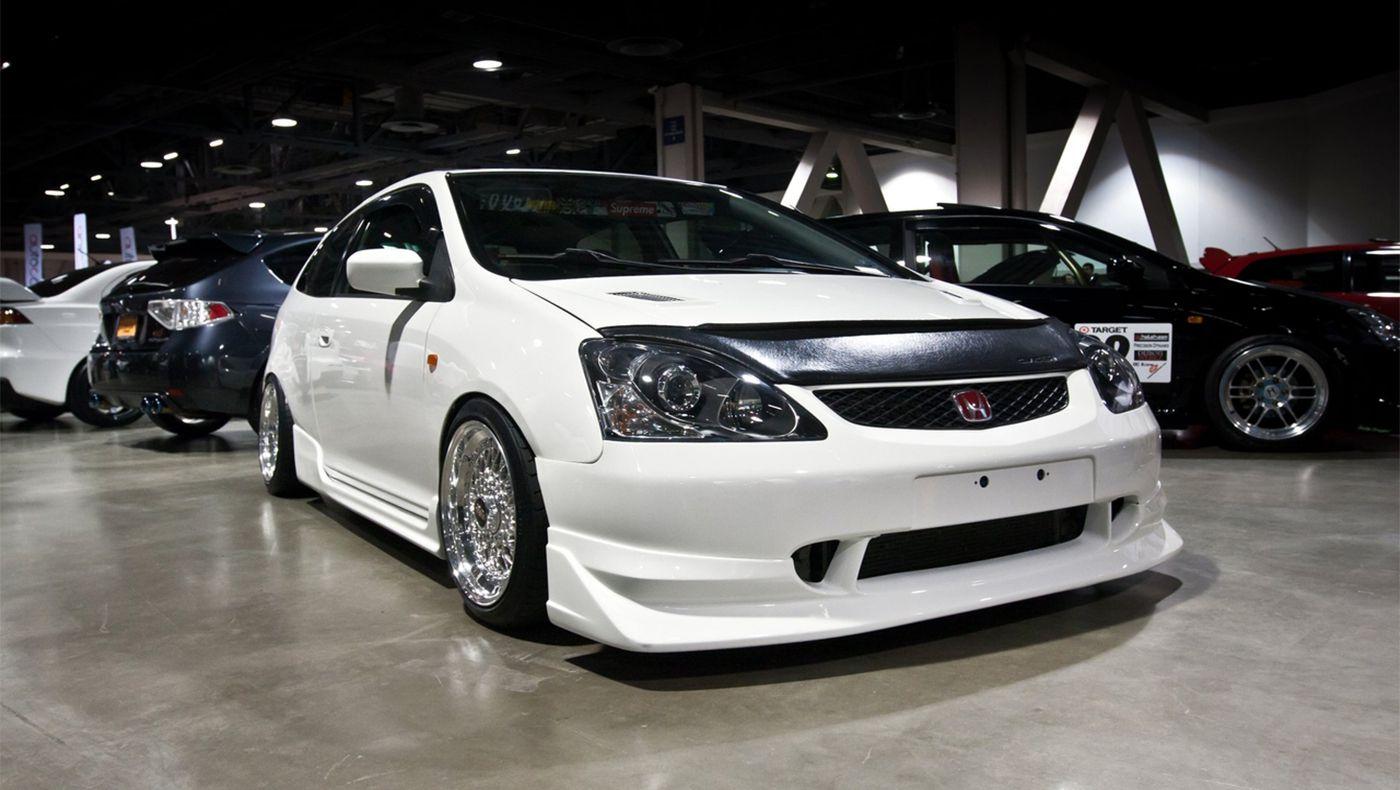
The seventh-gen Civic is mostly known for the K20 engines in the Si, Sport, and Type-R spec Civic. But Honda did not discontinue the D-series engine for the Civic, and you can find it in base models. The only D-series engine discontinued is the D13 which was replaced by the 1.3-liter LDA hybrid engine with SOHC technology. Honda also made a 5-door hatchback model for the first time in the Civic Lineup.
A new 6-speed manual transmission was also introduced for the seventh-gen Civic. At this time, manufacturers were discontinuing the traditional automatic transmissions. Honda was not left behind in this race as they also used a 4/5-speed CVT transmission instead of the 4-speed automatic transmission.
Most Civic buyers would rather opt for older-gen Civics with the traditional automatic transmission rather than the CVT transmission introduced in 2000 for the seventh-gen Civic. The CVT transmission is still in use to date, and Honda used it more in every Honda Civic produced after 2005.
Civic DX, LX
These were sold as coupes or sedans with the 1.7-liter D17 engines (D17A1, D17A2) that made around 100 to 130 horsepower at the time of production.
HX
The HX was only sold as a coupe with the D17A2 in the Civic DX and LX mated to a 4/5-speed CVT transmission which buyers could upgrade to a 5-speed manual.
EX
This spec is more like a luxury base spec model sold in sedan and coupe body configurations. It uses the same engine and transmission options in the LX, HX, and DX but with a sunroof, CD player, and quality fabric seats that were optional in the base spec models.
Si, Si-R, Type S, Civic i-VTEC, Civic Sport
Marketed as the Si-R in Canada and the Type S in Europe, the Civic Si was the base spec model sporty Honda Civic with a 2.0-litre K20A3 engine which made around 160 horsepower at production. In Canada, the USA, and Europe, it was sold as a hatchback only, while sold as a sedan, coupe, or hatchback in other markets.
Honda also manufactures cars in Thailand, and for the sixth-generation Civic, the K20A3 engine was put in the Civic i-VTEC or the Civic sport, which is similar to any other Civic with the K20A3 engine.
Type R
This was the second-gen Civic Type R, but it had the K20A engine instead of the B16B used in its predecessor. The K20A powerplant made close to 200 horsepower when stock and is mated to a 6-speed manual transmission.
Other Generations
Honda still continued making the Civic after 2005, but most JDM enthusiasts and prospective Civic buyers prefer models from the seventh generation and its predecessors. The Civic hatch just looks like a shortened sedan with a raised trunk, while what they call a coupe is actually a four-door sedan with some sporty accents on the exterior and exterior.
The manual transmission is mainly reserved for the Type R and Si spec, and you rarely find a base-spec model with a manual transmission. Like most manufacturers, Honda took out the fun in the Civic,
FAQ
Yes, Civics are some of the most affordable and low-maintenance JDM cars. If something is wrong with your Honda Civic, you can fix it in your garage as it is easy to work on due to its simple build. Replacing compulsory parts such as head gaskets or air filters shouldn’t be a bother as you can easily find them in your local auto store.
Yes. But this is only necessary if you plan to use your Civic for motorsports that winning is advantaged by having an AWD or RWD car. Such motorsports include drag racing, drifting, and track racing. But if you still want to do it, it’s worth it as an AWD or RWD setup ensures better power delivery to the wheels.
If you are looking for a Civic engine, you should probably consider one from the B-series, K-series, or D-series. These are good engines suitable for any build, whether a daily driver car or a drift car, but they do not come cheap. You’ll have to budget for a minimum of $3,000, which you can get a stalled civic for with your dream engine. The only advantage of buying an engine is that it comes fully serviced and all you have to do is install it.
Yes, No Honda Civic comes with a turbocharger, but the engines are super capable of massive power outputs, and the only way you can achieve it is by either supercharging or turbocharging. There are various aftermarket turbocharger and supercharger kits, turbocharger kits being the most common and sought after.
1991-1995 (Fifth Gen Civic). This is the most sought-after Civic as it has the best build quality and engine and transmission options.
2000-2005 (seventh-gen Civic). The seventh-gen Civic had many recalls and issues mainly due to the new CVT transmission, burnt electrical fuses, airbag issues, and coolant leaks. On average, buyers could spend more than they bought the car for fixing such repairs.
Yes. The main concern with a daily driver’s car is reliability which you don’t have to worry about when driving your Honda Civic to work or school. Civics have a great fuel economy and are easy to maintain, and if you play around with the engine, you might get to school quicker than your schoolmates driving modern cars.
How to Import a Honda Civic from Japan
Read our Ultimate Guide on How to Import a Car from Japan.
